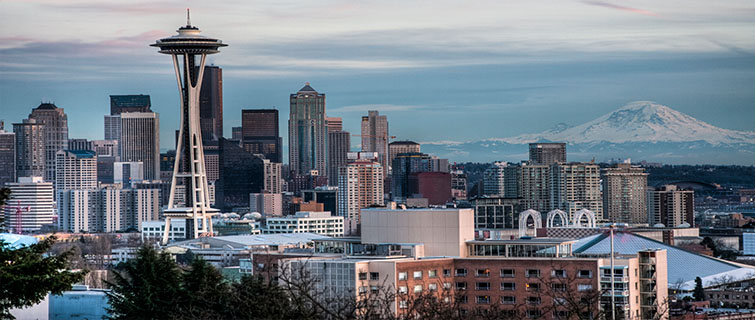
In “The Really Big One,” an alarming piece in the July 20 issue of The New Yorker magazine, author Kathryn Schultz says the Pacific Northwest is woefully unprepared for a major earthquake that has a one-in-three chance of striking the region in the next 50 years. Below, Randall B. Griffin, an instructor in Georgetown University’s Master's in Emergency & Disaster Management (EDM) program, and two EDM students who have evaluated Seattle’s emergency preparedness plans—Katherine Hawn and Albert Gembara—comment on the article.
Kathryn Schultz issues a compelling call to action in response to the possibility of a major earthquake occurring along the Cascadia Subduction Zone in the Pacific Northwest. As Schultz points out, we know more today about the potential for geophysical events and their likelihood than in any time in our history. Her message is not one of passive acceptance, but of public engagement and enlightenment. By better understanding the historical significance of this fault line, scientists can more accurately determine the level of preparedness required and steps that can be made to mitigate the effects of a potentially devastating catastrophe.
Seattle’s two main earthquake vulnerabilities are unreinforced masonry buildings (URMs) and communities located in liquefaction zones, those areas where water saturation and shaking would cause sediment to temporarily lose its strength and behave like a liquid. Based on our analysis, infrastructure damage is Seattle’s biggest risk because of the high vulnerability of underlying structures and buildings, of which only 14 percent have been retrofitted to withstand earthquakes.
While there is validity to Seattle’s plan to put more energy and money into retrofitting buildings, there is also a danger of over-committing emergency personnel and resources to that hazard alone. Over the past century, biological hazards have actually resulted in greater economic impact and loss of life. While the information in the article is terrifying, earthquake-related issues are but one of many hazards. Seattle needs to take an all-hazards approach and prepare by providing adequate shelters, working on effective communication with vulnerable populations, increasing awareness of bio hazards, and increasing collaboration among all agencies involved in a potential response.
Seattle is already building a strong coalition of Neighborhood Response Teams. Based on some of the lessons we’ve learned this year and our research, we’ve concluded that there’s a fine line between acknowledging the reality of a threat and needlessly scaring the public. A lot of these preparedness programs can be customized to fit multiple threats. While reinforcing URMs is a long-term structural investment, given the information in the article and our own research, we would argue that the investment in preparedness programs, including family communication plans, is one of the most effective ways to continue to safeguard the Seattle area from multiple hazards, including earthquakes and pandemics.